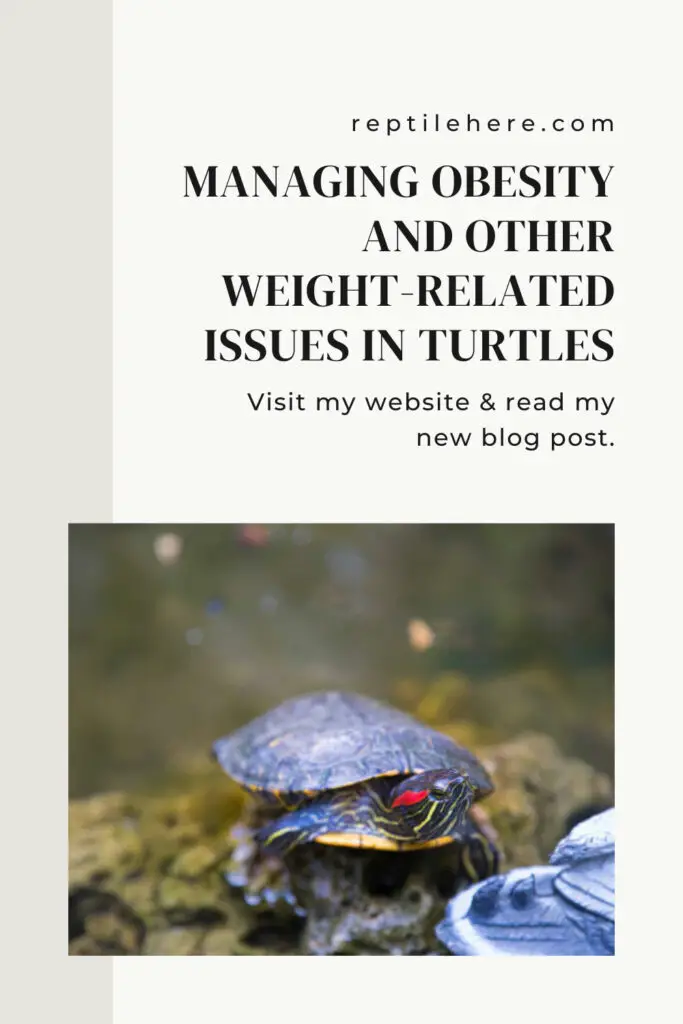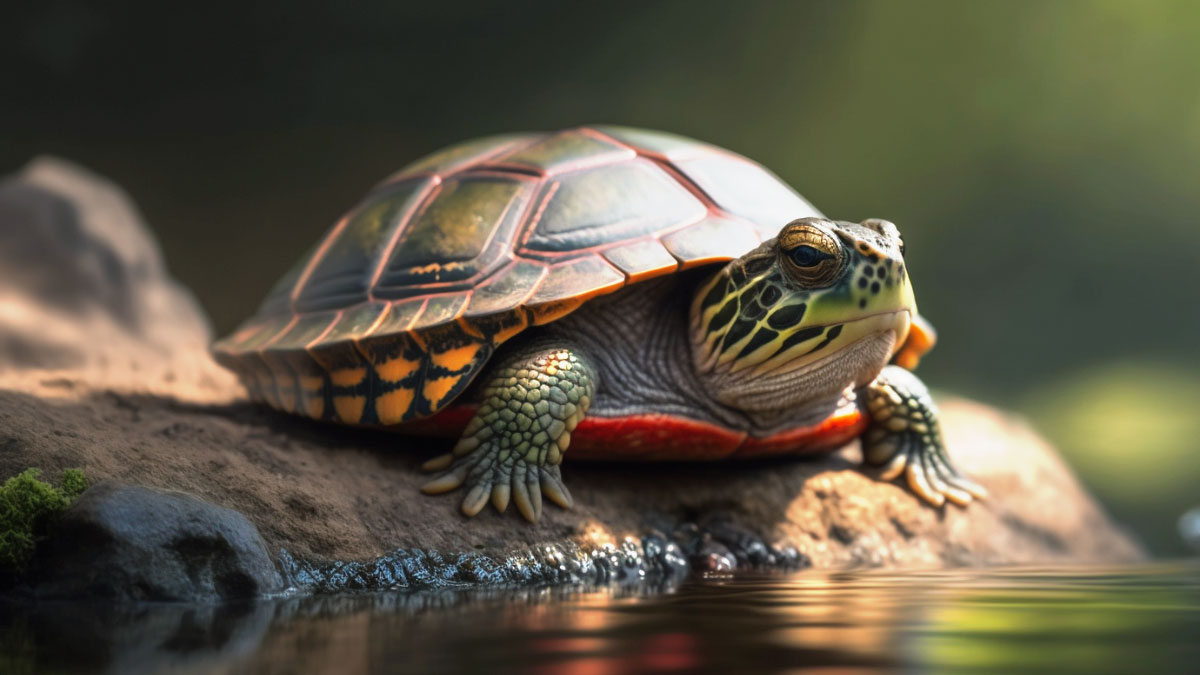Managing Obesity and Other Weight-related Issues in Turtles
Your pet turtle is at risk of obesity and other weight-related issues if it consumes more calories than it spends. Even worse, obesity can be the beginning of other health issues in your turtle, such as organ damage, joint problems, etc., if not taken care of on time.
This article will take you through everything you need to know about turtle obesity, including how to tell if your turtle is overweight, how to manage the issue in your pet turtle, how to prevent weight-related issues in your pet turtle, and so much more.
Contents
Turtle obesity is simply what it sounds like—your turtle getting fat. This is a serious health condition that comes with its own set of problems.
Your turtle species has a specific growth rate that shows how it grows in size in relation to weight. So, if your turtle goes against the normal growth curve and gains more weight than its size, it means it is starting to become overweight.
If your turtle becomes obese, its daily movements can get hampered. It won’t be able to move as swiftly as before. Fat accumulation can also mess up your turtle’s swimming speed and it may get tired easily and become unable to swim properly.
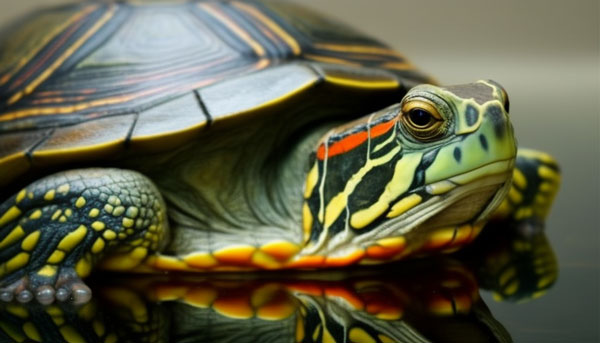
Moreover, if you house a fat turtle with a healthy one, the former will do nothing much to defend itself from the bully.
Excessive accumulation of fats in turtles can also put a strain on their internal organs and result in other health issues such as heart disease, kidney failure, and fatty liver disease.
Another weight-related issue in turtles is pyramiding which is caused by feeding your turtle too much protein. This particular issue causes the shell to protrude upward like a pyramid and it can lead to permanent deformities if not treated early enough.
Overall, obesity in turtles shortens your turtle’s lifespan of your turtle and reduces its overall life quality.
How do you tell if your turtle is obese?
You can tell if your turtle is obese by looking for key symptoms such as hanging skin, turtleneck (fats accumulation around the neck), bulging out when it tucks in its legs, inability to tuck its legs all the way into its shell, and fat tissues billowing outward.

Additional signs of a fat turtle include struggling to swim or walk around, being unable to retract its body into its shell, and soft tissues around its limbs, armpits, and neck.
Check the video below of fat red-eared sliders to get an idea of what an obese turtle looks like.
Video:
What makes your turtle obese?
Lack of exercise and poor nutrition are the key culprits behind obesity in pet turtles. Overfeeding your turtle with an unhealthy diet will also lead to weight gain.
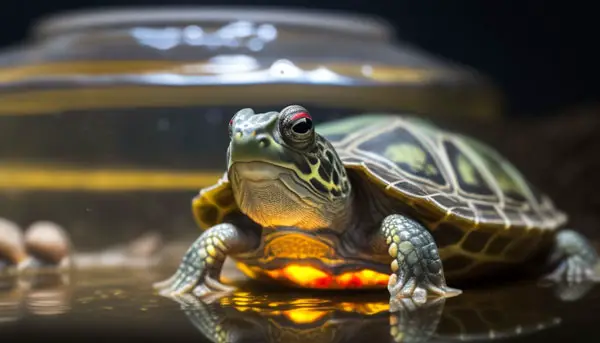
Keeping your turtle in a congested enclosure where it doesn’t have enough space for swimming and moving around translates to lack of exercise. This can cause it to accumulate fats with time and become obese.
What should you do if your turtle becomes obese?
If obesity has already caught up with your turtle, then you need to take various actions to try and help it lose weight.
You should start by evaluating your turtle’s diet. Reduce the amount of food you’ve been feeding your turtle and aim to feed it only once every 3 days.
Also, be sure to cut down on the amount you feed the turtle every time. Feed it as much food as it can finish in about 15 minutes or an amount similar to the size of its head.
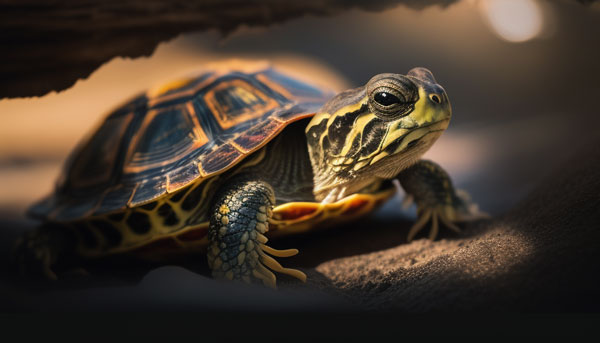
And be sure to remove any leftover food to keep it from snacking throughout the day.
In addition to a strict diet, you should also stick to a strict feeding schedule for your turtle. If you have a baby or juvenile turtle, you should only feed it once a day at around the same time.
For adult turtles, you should feed them after every 2-3 days and at around the same time.
What preventive measures should you take to prevent obesity in your pet turtle?
Prevention is the best treatment for obesity as making a fat turtle lose weight can be challenging and time-consuming.
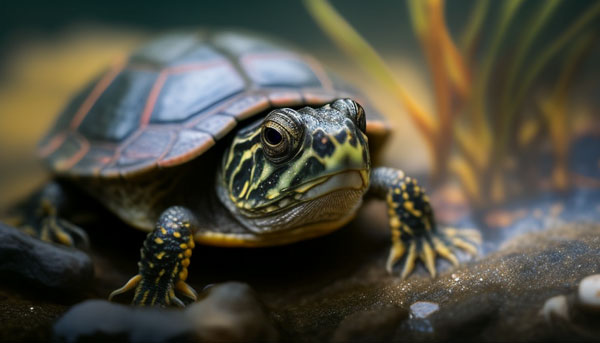
Here are some helpful tips you can implement to help prevent obesity in your pet turtle:
Nutritious diet
One of the most effective ways of ensuring your turtle doesn’t become overweight is by providing it with a balanced diet. A healthy diet for your turtles should be varied. Don’t feed them high-quality commercial pellets only.
Instead, mix their diet with fruits, veggies, and even live prey. Don’t forget to occasionally feed it with supplements of essential minerals and vitamins such as calcium and vitamin A.
Avoid overfeeding
Turtles are opportunistic feeders and will eat everything you throw their way. For this reason, it’s pretty easy to overfeed your turtle as you may think it’s not yet full.
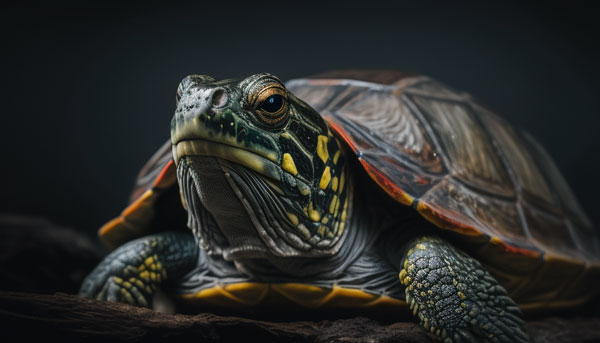
Unfortunately, this leads to overfeeding and its results will soon manifest in your turtle in terms of obesity.
Avoid too much unhealthy treats
Treats can easily make your turtle overweight. Treats are tasty and your turtle will eat them every chance they get. We advise you to give them to your turtle in small amounts and in moderation to prevent weight gain which can lead to obesity. Still at it, make sure you only give your turtle healthy treats.
Regular exercise
Another way you can prevent obesity in your pet turtle is by encouraging it to exercise regularly. You can achieve this by providing your turtle live prey in its enclosure. This will force it to chase and catch the prey to consume it.
Besides, you should let your turtle out of its enclosure regularly and let it roam indoors or outdoors under your supervision. This will further promote exercising.

Providing your turtle with a spacious enclosure will encourage your turtle to move around and promote exercising. Get your turtle a tank with lots of horizontal and vertical space so that it can swim and dive and thus exercise its body.
Monitor your turtle weight
Above all, you should keep monitoring your turtle’s weight regularly and ensure it doesn’t go being the healthy weight range, depending on your turtle species.
If you notice your turtle adding weight, adjust its diet and exercise routine to fight the weight gain before it gets out of hand.
You should also consult your vet for professional advice on how to keep your turtle from gaining weight.
Final Verdict
Your turtle can easily become obese due to issues related to poor care such as poor nutrition, overfeeding, giving it too much of unhealthy treats, keeping it in a small tank, and not exercising regularly. If not taken care of early on, obesity can even lead to internal organ damage, heart diseases, kidney diseases, etc., and ultimately cut short your turtle’s lifespan.
Once your turtle has become fat, making it lose weight can be a slow and challenging process. So, we advise you to take preventive measures to keep obesity away from your turtle. Give your pet a healthy diet, encourage it to exercise more, avoid too much unhealthy treats, and keep monitoring its weight so it doesn’t go beyond the healthy range.
